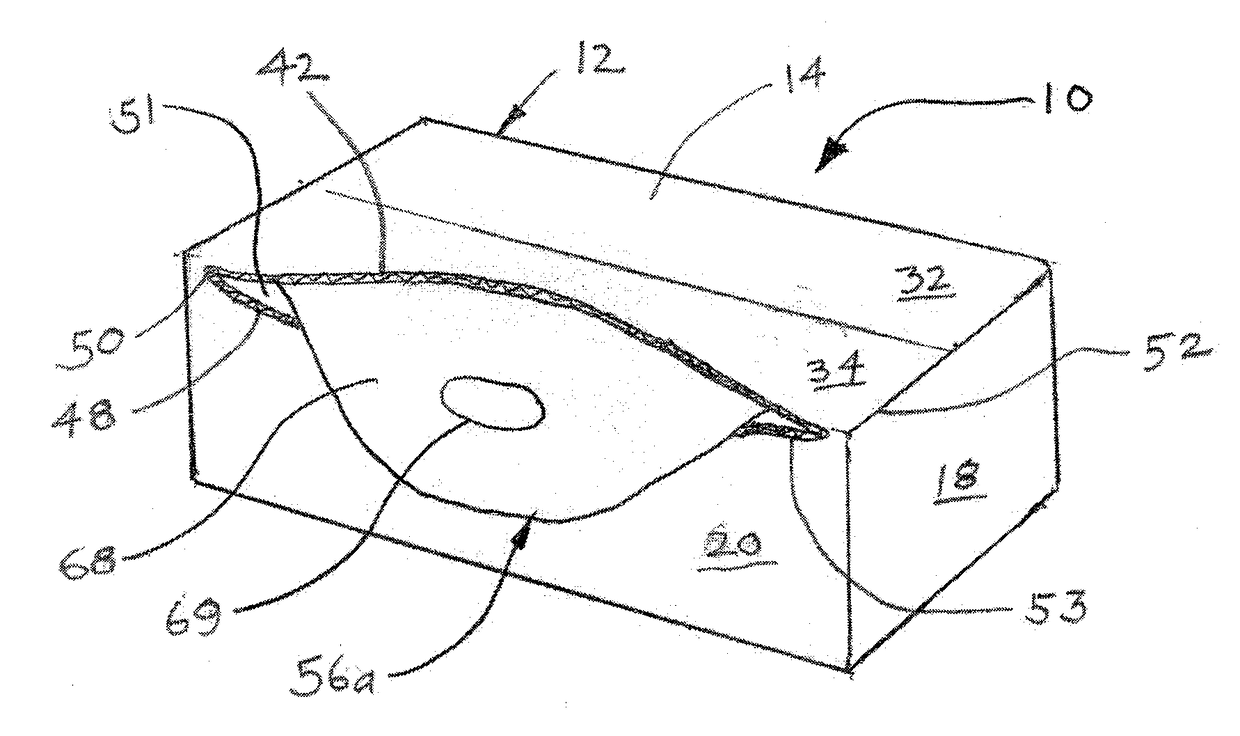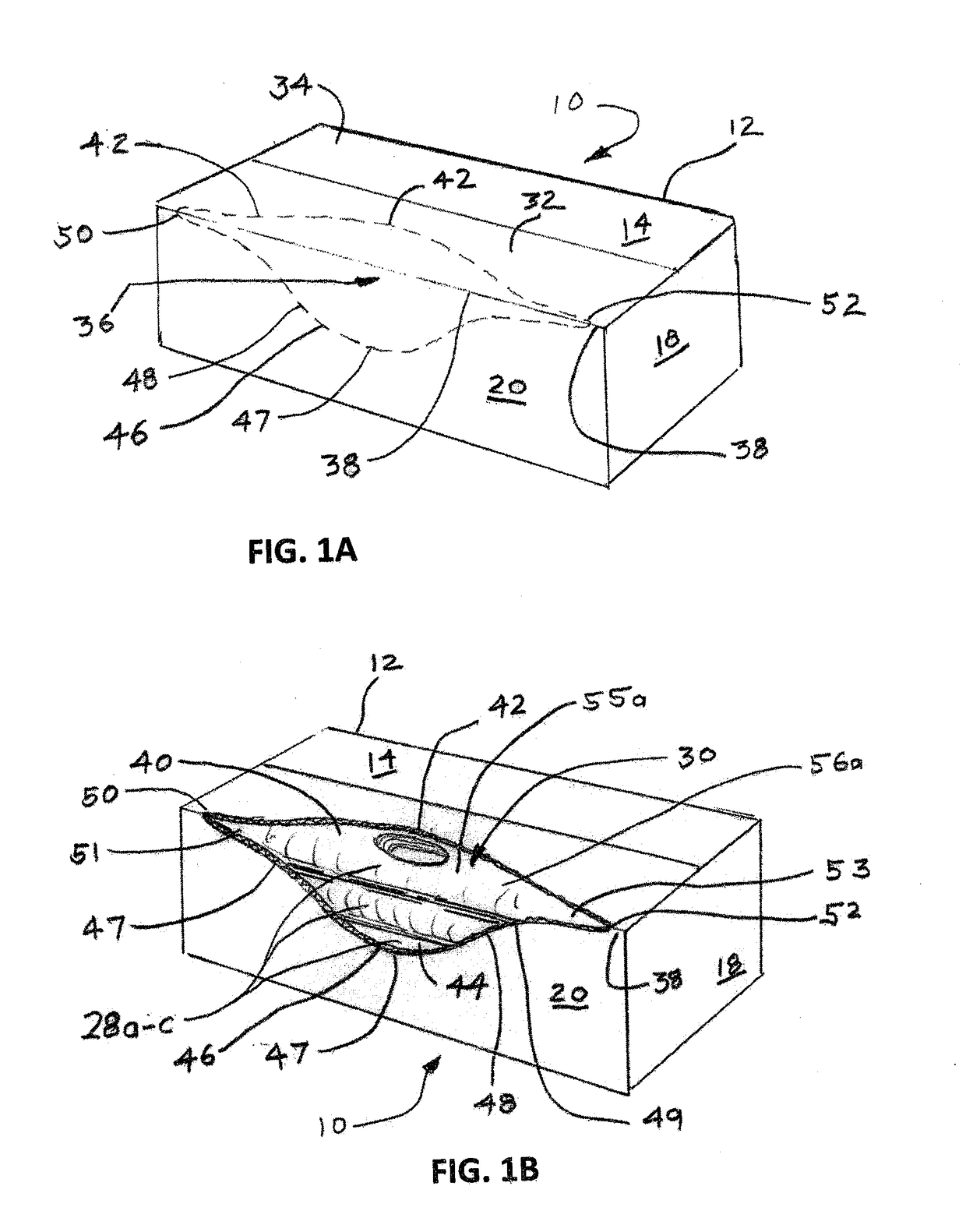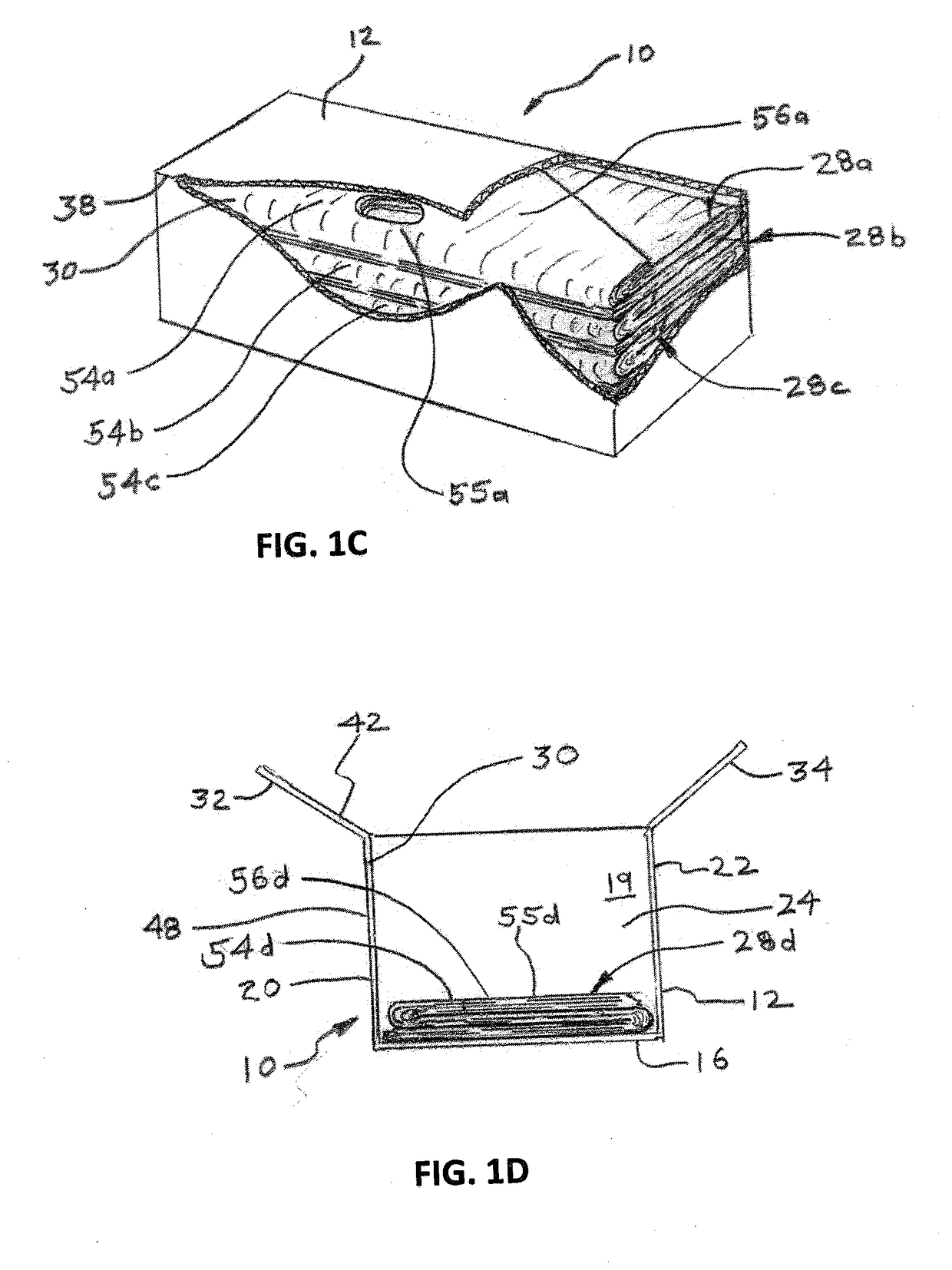They are considered somewhat of a nuisance to be located atop a working surface and are generally unattractive.
At times, separate
metal holders and dispensers are used for multiple bag sizes, thus magnifying these issues.
In this particular instance, the appearance of the bakery area is important to retailers, and mounting external holders takes away from an otherwise attractive, clean, professional appearance.
It is commonly known that plastic bags dispensed from cartons as such tend to be difficult to dispense effectively and singularly, often being extracted in bag clumps.
While the Heritage type of bag dispensing may be desirable for
low density plastic utility bags, it has not been acceptable for attractive, printed retail and food service bags.
This type of dispensing further slows down the use of retail and food service bags since they are not grasped at the bag mouth.
While these bag styles improve dispensing and productivity and reduce waste, they cost more to manufacture and
package into their dispenser cartons with the larger
footprint of bags being packed in a generally flat disposition.
These types of dispenser cartons can also represent a cost factor that is as high as ten percent of the cost of the bags inside the dispenser.
In addition to the foregoing, other problems come into play when designing a bag stack and dispenser.
For example, it is commonly understood that as much as 10% of bakery bags and articles like bakery sheets are thrown away by retailers due to ineffective dispensing that creates unsanitary conditions.
Regardless of the type of prior art dispenser, cleanliness,
sanitation, and waste becomes an issue due to multiple dispensing of bags stuck together and the presence of
carton dust.
Likewise, an open container with a large dispenser opening may be exposed to other
sanitation issues from customers and users and thus there are tradeoffs concerning both opening location and size.
An additional problem is that manufacturers of plastic bags dispensed in prior art dispensers will usually pack bags with bag tops facing towards the dispenser opening, in order for the user to reach in and grasp the topmost bag.
In addition, bottom gusseted bags take up twice the space of flat bags, thus leaving the upper / forward half of the
carton half-empty.
However, if the bags are alternatively packed mouth-forward and
tail-forward, or folded over in a
carton in a conventional configuration, it may take as long as five to eight seconds.
While the bags disclosed in the '191 publication more or less overcome all of the deficiencies of prior art, not all bag making companies are adept at making bags that can self-open.
Should the tails be folded too far, they will overlap the
handle sections making it difficult to retrieve the top most bag.
In addition, for bags with bottom gussets, the folding of the
tail section where the gussets are located onto the remainder of the bag stack would result in an enlarged height folded
tail section adjacent a much small height section creating a significant discrepancy in the profile of the bag stack.
This presents one of two problems.
Either the dispenser would have to be sized to accommodate the thicker end of the folded stack leaving a significant amount of undesirable unused space around the unfolded end of the stack creating collapsing or crushing issues when the dispensers are palletized or the dispenser shaped would have to be a non-conventional shape creating additional manufacturing expenses and stacking issues when palletizing.
Thus, the folding configuration shown in the '570 patent is not an ideal space-saving configuration.
However, the rolled up profile typically takes up a significant amount of space, often binds due to the
heavy weight of the roll, and may not provide the preferred dispenser profile.
The manufacturing of such an article is accomplished on a
machine that is generally very costly and dispenses sheet articles from a slot in the middle of the top of a box.
As can be imagined, this type of dispensing is impractical in shelves, unless there is substantial headroom.
Likewise, it goes without saying that any sheet packaged in a carton is in contact with
paper dust, which in turn can present
contamination problems.
Regardless of the industry—bakery, food, deli, butchers, salon, and so on—efficient dispensing is limited to the use of chipboard and various paper board dispensers.
Unfortunately this application wastes plastic material (the large tab) and is unsuitable for the dispensing of most bags that have no tabs.
Being difficult to extract, the
package slides very easily and requires two hands to dispense.
The
package openings are often surrounded by a plastic frame to reinforce the opening as well adding more expense to the dispenser packaging.
Thus, while the dispenser and flat stack solutions provided in both '570 patent and the '191 publication overcome many of the deficiencies in the prior art, the elongated flat stack of articles presents an enlarged dispenser profile that is not suitable for all settings, especially those with limited space.
 Login to View More
Login to View More  Login to View More
Login to View More 


